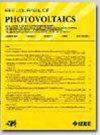A Solar PV-Based Compact EV Charging Solution for On-Board Applications
IF 2.6
3区 工程技术
Q3 ENERGY & FUELS
引用次数: 0
Abstract
This work is focused on a solar photovoltaics (PV)-based onboard charger using reconfigured motor windings. In the proposed scheme, the motor windings and traction converter switches form a three-phase interleaved buck converter (IBC). The IBC is interfaced with the solar PV and acts as the maximum power point tracking converter. The IBC reduces the current ripple at the battery side and improves the battery cycle life. Through IBC, a large amount of current at the battery side is paralleled in three inductors of the IBC, which reduces the基于太阳能光伏的车载紧凑型电动汽车充电解决方案
这项工作的重点是太阳能光伏(PV)为基础的车载充电器使用重新配置的电机绕组。在该方案中,电机绕组和牵引变换器开关组成一个三相交错降压变换器(IBC)。IBC与太阳能光伏接口,作为最大功率点跟踪转换器。IBC减少了电池侧的电流纹波,提高了电池的循环寿命。通过IBC,电池侧的大量电流在IBC的三个电感中并联,从而降低了开关的导通损耗和电感的铜损耗。因此,在降低成本的同时,可以在增强系统紧凑性的基础上,将车载充电系统的功率水平提高到与推进系统一样高的水平。此外,所应用的控制策略降低了IBC中当前传感器的要求,并且消除了比例积分控制器,这是该系统与传统IBC控制相比的另一个主要优点。此外,开关经受零电流开关。最后,利用OPAL-RT平台,在充电功率为6kw的情况下,完成了系统的实时实验。
本文章由计算机程序翻译,如有差异,请以英文原文为准。
求助全文
约1分钟内获得全文
求助全文
来源期刊

IEEE Journal of Photovoltaics
ENERGY & FUELS-MATERIALS SCIENCE, MULTIDISCIPLINARY
CiteScore
7.00
自引率
10.00%
发文量
206
期刊介绍:
The IEEE Journal of Photovoltaics is a peer-reviewed, archival publication reporting original and significant research results that advance the field of photovoltaics (PV). The PV field is diverse in its science base ranging from semiconductor and PV device physics to optics and the materials sciences. The journal publishes articles that connect this science base to PV science and technology. The intent is to publish original research results that are of primary interest to the photovoltaic specialist. The scope of the IEEE J. Photovoltaics incorporates: fundamentals and new concepts of PV conversion, including those based on nanostructured materials, low-dimensional physics, multiple charge generation, up/down converters, thermophotovoltaics, hot-carrier effects, plasmonics, metamorphic materials, luminescent concentrators, and rectennas; Si-based PV, including new cell designs, crystalline and non-crystalline Si, passivation, characterization and Si crystal growth; polycrystalline, amorphous and crystalline thin-film solar cell materials, including PV structures and solar cells based on II-VI, chalcopyrite, Si and other thin film absorbers; III-V PV materials, heterostructures, multijunction devices and concentrator PV; optics for light trapping, reflection control and concentration; organic PV including polymer, hybrid and dye sensitized solar cells; space PV including cell materials and PV devices, defects and reliability, environmental effects and protective materials; PV modeling and characterization methods; and other aspects of PV, including modules, power conditioning, inverters, balance-of-systems components, monitoring, analyses and simulations, and supporting PV module standards and measurements. Tutorial and review papers on these subjects are also published and occasionally special issues are published to treat particular areas in more depth and breadth.
 求助内容:
求助内容: 应助结果提醒方式:
应助结果提醒方式:


